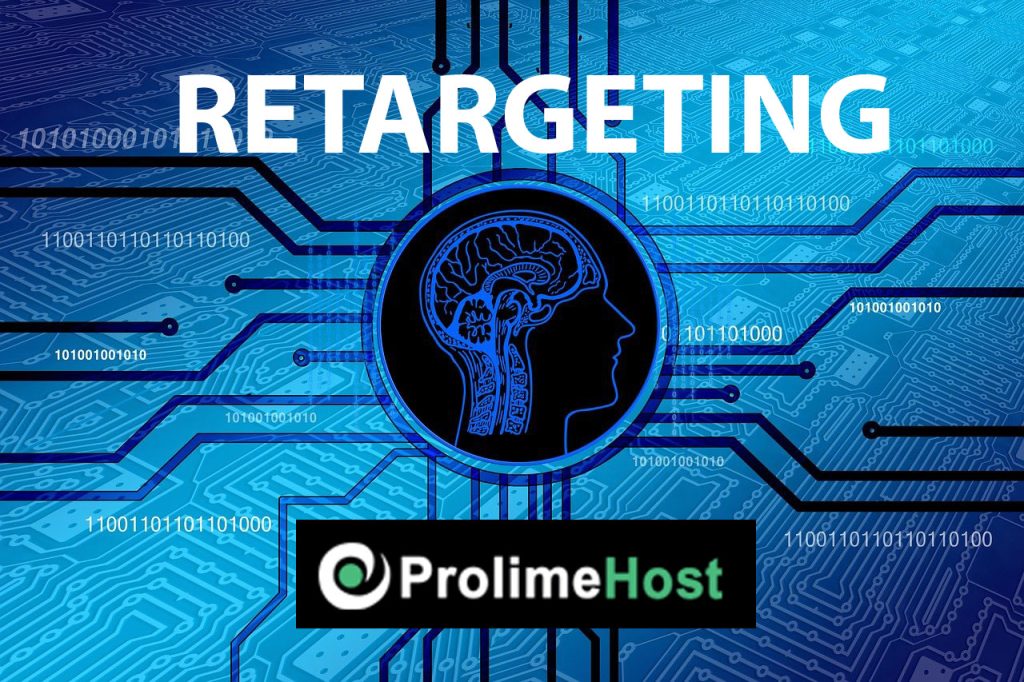
Retargeting is a digital marketing strategy that targets individuals who have previously interacted with a website or content but did not complete a purchase or desired action. Here’s a breakdown of how it works and its uses:
How Retargeting Works:
• A tracking pixel is placed on a website or piece of content.• This pixel collects information about visitors who access the content.
• The collected data is used to create a custom audience.
• Ads are then shown to this audience on other platforms like social media, search engines, and display networks.
Uses of Retargeting:
• Segment customers based on traits or behaviors.
• Keep your brand and products top of mind.
• Control advertising costs and improve ROI (Return on Investment).
For example, if someone visits a web hosting provider’s site and looks at dedicated servers but doesn’t lease one, the site can use retargeting to show ads for servers to that user on other websites they visit, increasing the chances of the user returning to make a purchase.
Retargeting is effective because it focuses on people who are already familiar with your brand and have shown interest in your products, making them more likely to convert into customers. It’s a powerful tool for increasing brand awareness and driving sales by staying in front of potential customers throughout their online journey.
To implement remarketing, you can use services from several companies that offer robust platforms for this purpose. Some of the most popular platforms include:
• Google Ads: Offers a wide range of ad formats and placements across its network, including search, display, and video ads. Using Google Ads for remarketing involves several steps to effectively re-engage with users who have previously interacted with your website. Here’s a step-by-step guide:
1. Install the Google Ads Remarketing Tag:
• Add the Google remarketing tag to all pages of your website. This tag will collect information about visitors for your remarketing lists.
2. Link Google Analytics and Google Ads:
• If you use Google Analytics, link it to your Google Ads account to enhance tracking and targeting capabilities.
3. Create Remarketing Lists:
• In Google Ads, create remarketing lists based on user behavior, such as visitors who viewed a specific page or abandoned a shopping cart.
4. Set Up a Remarketing Campaign:
• Choose the ‘Display Network’ campaign type and select ‘Remarketing’ as the campaign objective.
• Define your audience by selecting the remarketing lists you’ve created.
5. Create Ads for Your Campaign:
• Design responsive ads that will adjust to different screen sizes and formats, or upload pre-designed ads.
• For dynamic remarketing, ensure your ads include products or services users viewed on your site.
6. Configure Campaign Settings:
• Set your budget, bidding strategy, and ad placements to determine where and how often your ads will appear.
7. Monitor and Optimize:
• Regularly review your campaign’s performance and make adjustments to improve results, such as refining your audience lists or changing ad creatives.
• Facebook Ads: Allows you to target users on Facebook and Instagram based on their past interactions with your website or app. Implementing Facebook Ads for remarketing involves a few key steps to target users based on their past interactions with your website or app. Here’s how you can set it up:
1. Create a Facebook Business Page:
• If you haven’t already, create a Facebook Business Page as it’s necessary for running ads.
2. Install the Facebook Pixel:
• Add the Facebook Pixel to your website. This is a piece of code that tracks user activity and helps you build your retargeting audience.
3. Create Custom Audiences:
• In the Facebook Ads Manager, create custom audiences by selecting the option to include people based on their past interactions with your website or app.
4. Set Up Conversion Tracking:
• Configure conversion tracking to measure the effectiveness of your ads and understand the actions people take after clicking on them.
5. Create a Remarketing Campaign:
• Go to Facebook.com/ads/manager, log into your account, and create a new ad campaign with a focus on ‘Conversions’.
• Choose your custom audience for targeting and set up your ad with compelling images and copy.
6. Create Remarketing Ads:
• Design ads that will resonate with your audience, reminding them of the products they viewed or interacted with on your site.
7. Monitor and Optimize:
• Once your ads are running, keep an eye on their performance. Use the insights to optimize your ad copy, targeting, and bidding strategy.
By following these steps, you can effectively use Facebook Ads to retarget users and encourage them to take action, such as making a purchase or downloading an app.
• Microsoft Advertising: Provides access to the Microsoft Search Network and other Microsoft products for ad placements. Implementing a remarketing strategy with Microsoft Advertising involves a few key steps to effectively target users who have previously visited your site. Here’s a guide to help you get started:
1. Set Up Universal Event Tracking (UET):
• Create a UET tag in Microsoft Advertising and add the JavaScript tracking code to every page of your website. This will track visitors and their behavior on your site.
2. Create Remarketing Lists:
• Use the data collected by the UET tag to create remarketing lists. You can segment these lists based on specific actions users took on your site, such as visiting a particular page or adding items to a shopping cart.
3. Set Up a Remarketing Campaign:
• In Microsoft Advertising, create a new campaign and select the option for remarketing. Choose your remarketing lists as the target audience.
4. Design Your Ads:
• Create compelling ads that will remind users of the products or services they viewed on your site. Use strong calls-to-action to encourage them to return and complete a purchase.
5. Adjust Bids and Budgets:
• Set your bids and budgets, considering the value of the users on your remarketing lists. You may want to bid higher for users who have abandoned a shopping cart, as they are closer to making a purchase.
6. Monitor and Optimize:
• Regularly review the performance of your remarketing campaigns. Look at metrics like click-through rate (CTR) and conversion rate to determine if your ads are effectively bringing users back to your site.
7. Comply with Policies:
• Ensure that your remarketing efforts comply with Microsoft Advertising policies, especially regarding user privacy and sensitive categories.
By following these steps, you can leverage Microsoft Advertising’s network to re-engage with users who have shown interest in your offerings, increasing the likelihood of conversions and driving a higher return on investment.
• AdRoll: Specializes in retargeting and can integrate with other marketing software to create a comprehensive campaign.
Reach the right person, with the right message, at the right time
Powered by advanced AI and machine learning, the AdRoll platform helps you optimize your entire marketing strategy with insights from all of your campaigns, across every channel.
Boost brand awareness
Get noticed by your ideal customers with display, native, video, and social advertising.
Increase site visitors
Generate more traffic using advanced ad targeting that reaches custom audience segments and compels them to click.
Drive conversions
Attract and retain customers with tailored ads that convert prospects and keep them coming back for more.
Optimize performance
Understand how your channels and campaigns are working together to influence conversions and revenue.
These platforms provide tools to track user behavior, create custom audiences, and serve targeted ads to those audiences across various online channels. They are designed to help you re-engage with visitors who have shown interest in your products or services, with the goal of converting them into customers.
For more specialized needs, there are also software options like:
Madgicx, which is best for AI-powered retargeting, and Instapage, which is ideal for landing-page retargeting.
Madgicx – The World Class Tracking & Attribution Solution. Restoring confidence in your Facebook ad attribution reporting with accurate & actionable attribution.
Madgicx is the first Ecom Ad Cloud, providing you with all the tools you need to drive kickass ROAS. Return On Advertising Spend (ROAS) is a marketing metric that measures the efficacy of a digital advertising campaign. ROAS helps online businesses evaluate which methods are working and how they can improve future advertising efforts. Instead of offering point solutions like their 45+ competitors, they have everything in one place.
Instapage – Landing pages without limits
Instapage enables you to power your campaigns and turn more ad clicks into customers with all the intuitive experimentation, optimization, reporting, and growth tools you need—all in one place. It makes it easier than ever to build, test, and optimize your pages with the power of artificial intelligence.
The key to successful remarketing is to choose the right platform that aligns with your business goals and target audience. It’s also important to ensure that your remarketing efforts COMPLY with privacy regulations and provide a positive experience for the users.

BROUGHT TO YOU BY PROLIMEHOST
We’ve been in the web hosting industry for over a decade, helping hundreds of clients succeed in what they do best and that’s running their business. We specialize in Virtual Private Servers (VPS) and dedicated servers, with data centers in Los Angeles, Denver & Singapore.
VPS SERVICES: LIGHTNING FAST SSD VIRTUAL SERVERS
Our Virtual Private Servers all feature high performance Xeon processors and SSD storage in a RAID10 configuration to optimize your server’s performance, which dramatically enhances visitor experiences on your site.
That speed is backed by unparalleled 24/7 support, featuring both outstanding response AND resolution times to maximize your uptime.
Now is the time to join the ProlimeHost virtual private server revolution.
DEDICATED SERVERS: BACKED BY A 99.9% SLA NETWORK UPTIME GUARANTEE
We only use enterprise-class hardware in our dedicated servers and offer a four (4) hour hardware replacement. Throw in IPMI for remote management, support for public and private networks, free operating system (OS) re-installs, and SATA, SAS & SSD (including NVMe) storage. Call 1-877-477-9454 or contact us. For everything from gaming servers to cheap dedicated servers, we’re here to help.
ASIA OPTIMIZED SERVERS: IMPROVING CONNECTION SPEED AND QUALITY
Procuring an Asia optimized server improves the connection speed and quality between the server and the users in Asia or China. This can reduce latency, packet loss, jitter, and bandwidth issues that can affect the performance and reliability of the server and the applications hosted on it. For more information, please call 1-877-477-9454 or contact us.
- Current Status of IPv4 | IPv6 Addresses - May 2, 2025
- RAID: Software vs. Hardware – Which Is Right for You? - April 30, 2025
- Video Streaming in 2025 - April 28, 2025



